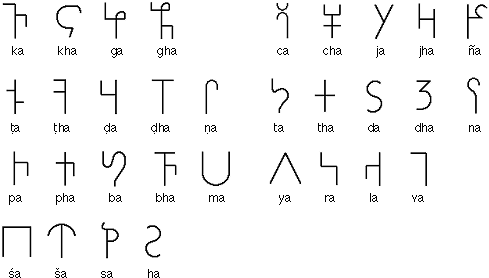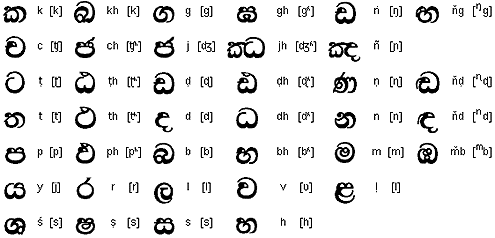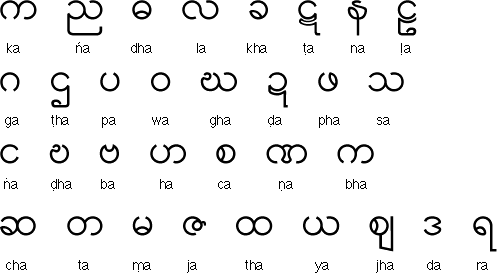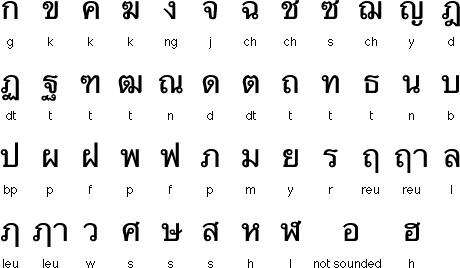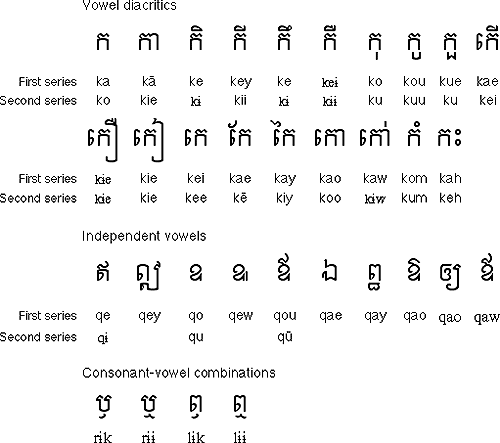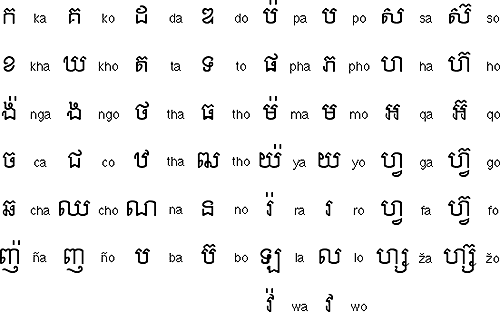


1. 字母與發音 (中文)
回到 頁首目錄 巴利語簡介 Paali is a member of the Indo-European family of languages, together with most languages of Europe, Iran and northern India. Inside this family it belongs to so-called Middle Indo-Aryan languages. This group is also called Prakrits in Indian linguistic works. Paali can be considered as one of the oldest surviving Prakrits. 巴利文與歐洲、伊朗、北印度大部份的語言一樣,是印歐語系的一支。在印歐語系之中,巴利文歸屬於中印度-亞利安語系,此語系在印度語言學著作中也被稱為Prakrit語。因此巴利文可以說是現存最古老的Prakrit之一。 The origin of Paali is still unclear. It was for a long time considered to be identical with Maagadhii, the Prakrit of Magadha, where the Buddha spent most of his life and teaching career. This ancient region is situated in modern Indian state of Bihar, in North-Eastern India. But more careful examination in recent years showed that Paali bears closer resemblance to Prakrits of Western India than to that of Magadha. The famous Indian emperor and patron of Buddhism A`soka, who lived only a few centuries after the Buddha, left many inscriptions all over his empire which stretched far beyond the borders of present day India. All these inscriptions were written in local vernaculars, using different scripts that were in use in that place and time. Paali is very close in grammar and orthography to the language of the inscriptions in what is now the Indian state of Uttarpradesh. 巴利文的起源目前仍然是不清楚的。曾經有一段很長的時間它被認為是與摩揭陀地方的古語摩揭陀語同源的,摩揭陀是佛陀度過大部份的生命與教學生涯的地方,這古代的地區位於現代印度東北方的比哈爾省。但近年來更多仔細的調查顯示出,巴利文跟摩揭陀地方的Prakrit語比起來,更相似於西印度的Prakrit語。佛陀死後幾個世紀,著名的印度國王、佛教的領導者阿育王,在他遠比現代印度領土更為廣大的帝國各地遺留下許多碑文,這些碑文都是使用各地的方言所寫,用的是當地當時所使用的各地不同的字體。巴利文和現代印度Uttarpradesh邦所發現的碑文文字在文法及拼字方面是相當類似的。 Therefore it is safe to assume that Paali was created artificially, probably not on purpose, but rather as monks and nuns from different parts of India came into contact with each other and were forced to adapt their vernaculars to new environments in order to understand and be understood. 因此,若假設巴利文是人為地被創造的將是不會引起爭議。與其說它是刻意地被創造出來,不如說是印度各地的僧尼彼此接觸後,被迫改變他們的方言去適應新環境,以便能夠彼此溝通了解。 Paali was and is written in many different scripts. In India, it was written in ancient Indian scripts Braahmii and Kharo.s.thii. When Buddhism spread to other parts of the world, local people used either original Indian scripts (so Kharo.s.thii was used for a long time in Central Asia) or switched to their own local scripts. So in Sri Lanka, Paali is written in Sinhalese script, in Burma it is Burmese script, in Thailand Thai script and in Cambodia the Khmer script. Finally, when Western scholars and practitioners started to learn about Buddhism, they used Roman characters to write Paali language. 巴利文在過去和現在使用許多不同字體,在印度,它用梵寐文字和佉盧虱吒文字等古印度字體寫成。當佛教傳播到世界其他地區時,當地人民會使用原始印度字體──因此佉盧虱吒文字在中亞被使用了一段很長時間──,或者會將原始印度字體轉寫成當地文字──例如在斯里蘭卡,巴利文是以錫蘭語改寫;在緬甸是以緬甸語改寫;在泰國是以泰語改寫;而在柬埔寨是以高棉語改寫──。最後,當西方學者及修行者開始學習佛教學時,他們使用羅馬字體改寫巴利文。 This page was created using some material downloaded from
Omniglot Miroslav Rozehnal 梵寐文字 (印度) Brahmi Script (India)
回到 頁首目錄 佉盧虱吒文字 (印度) Kharosthi Script (India)
回到 頁首目錄 天城文字 (印度) Devanagari Script (India)
回到 頁首目錄 錫蘭文字 (斯里蘭卡) Sinhalese (Sri Lanka) Script
緬甸文字 Burmese Script (Burma/Myanmar)
泰國文字 Thai Script (Thailand)
老撾文字 (寮國) Lao Script (Laos)
高棉文字 (柬埔寨) Khmer Script (Cambodia)
羅馬化字母與發音
回到 頁首目錄 依字典順序排序的字母
回到 頁首目錄 發音練習 單字發音練習(以下單字僅列一個常用意思)
句子發音練習1) 皈敬偈 (總禮文)
2) 三歸依文
3) 超世偈 (Dhammapada 354)
4) 通誡偈 (Dhammapada 183)
5) 緣起法頌 (Vinaya-pitaka, Mahavagga, I. 40. (5))
6) 三相 (tini lakkhanani)
7) 無常偈 (Mahaparinibbanasuttanta)回到 頁首目錄 |
|
||||||||||||||||||||||||||||||||||||||||||||||||||||||||||||||||||||||||||||||||||||||||||||||||||||||||||||||||||||||||||||||||||||||||




